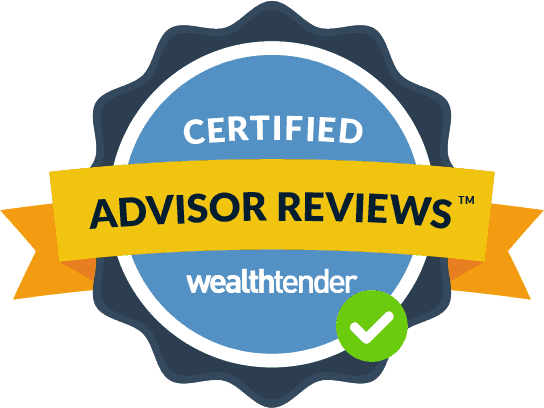Investment Management
Our investment philosophy is to remain disciplined and not to take more risk than needed to accomplish your goals.
We use an evidence-based investment approach to develop customized asset allocation based on your tolerance for risk, time horizon, and needs. We are proud to be a Dimensional Fund Advisors (DFA) approved firm and utilize their decades of rigorous peer-reviewed research based upon Nobel prize-winning economics. We create globally diversified portfolios comprised of low-cost institutional funds, mutual funds, exchange-traded funds (ETFs), and bonds. We strive to reduce taxes and expenses and look for tax harvesting opportunities and asset location optimization.
As an independent advisory firm, we’re not limited by proprietary, off-the-shelf products. That lets us focus on providing unbiased recommendations based on your needs. Once your strategy is implemented, we monitor and evaluate your portfolio, research potential opportunities as they arise, with a key focus on tax efficiency.
Below are the basic tenets under which the investment portfolio will be managed.
Diversification
The portfolio needs to be properly allocated among the various asset types to reduce risks and ensure consistent returns. Placing large bets on a single security, sector or asset class exposes the Portfolio to unnecessary and uncompensated risks and must be avoided.
Tax Efficiency
By considering taxes in every applicable portfolio management decision, the portfolio can considerably increase after-tax investment returns above comparable benchmarks and funds.
Low Cost
By combining low-cost indexes, direct holdings and institutional managers, investment costs can be minimized, directly impacting the net return of the portfolio and achievement of long-term objectives.
Transparency
Every manager and fund in the portfolio must provide full position-level transparency to verify that excessive risks are not being taken and that the holdings are liquid. The portfolio will not utilize opaque and illiquid holdings such as hedge funds, partnerships, and similar securities.
Inflation
Inflation is a far greater risk to the long-term success of the portfolio, and ultimately the Investor, than the risk of short-term market volatility. Discussions of investment risk must include the significant risk of inflation, and the design of the portfolio must reflect this reality. Referring to low volatility investments, such as Treasury bills or cash, as risk-free is not appropriate for long-term investors.
Drawdown Risk
In order for the portfolio to meet the Investor’s objectives, drawdown risk must be contained. A 50% decline in portfolio value requires a 100% subsequent gain to recover. While containing losses to 25% requires only a 33.3% subsequent gain for recovery. The portfolio design must reduce the likelihood of large drawdowns by maintaining appropriate diversification and margin of safety in asset class and security selection.
Avoiding Investment Fads
The latest investment fads and engineered products from Wall Street are rarely designed for the Investor’s benefit, and almost always involve excessively high fees. These are to be avoided in the portfolio design.
Consistency
Maintaining a disciplined investment strategy, even when short-term results create incredible pressure to abandon the strategy, is one of the single most important factors for an Investor to achieve their objectives. Bouncing from one strategy to the next based on short-term performance will devastate the long-term results.
Given these tenets, the underlying approach to managing the portfolio shall be to optimize the risk-return relationship appropriate to the client’s needs and goals. The portfolio will be diversified globally, employing a variety of asset classes. Mutual funds, exchange traded funds, and managed portfolios will be employed to implement the portfolio and the chosen asset classes will be periodically rebalanced to maintain a more consistent risk/reward profile.
We will create a customized Investment Policy Statement, which is to establish a clear understanding between the client and Grand Life Financial as to the investment goals and objectives and management policies applicable to the client’s investment portfolio.






